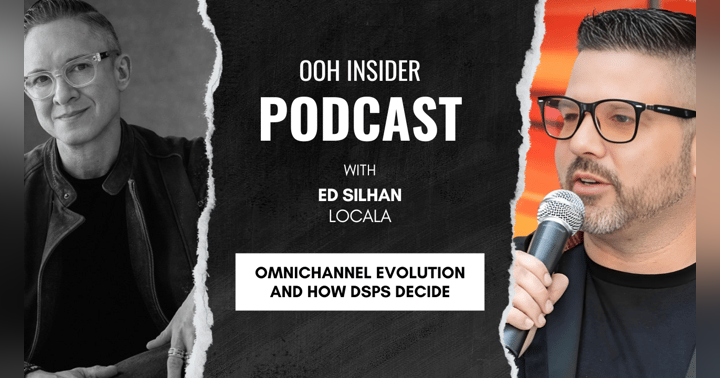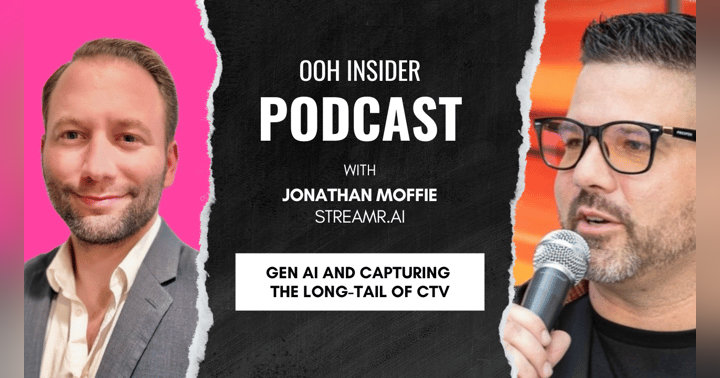What is a DSP and Why it Matters: Understanding the Significance of Demand-Side Platforms in Programmatic and Full-Stack OOH Advertising
What Is A DSP And Why Does It Matter?
Let’s start by breaking down what a DSP is and why it’s relevant. DSP is short for demand-side platform. This is the literal interface used by marketers to deploy ads. This can be Facebook Ads Manager, Google Ads Manager, or even The Trade Desk or Google’s DV360. Simply put, a DSP is how marketers access inventory and run campaigns.
For OOH, and more specifically, programmatic digital OOH, these are platforms like Vistar or Adomni. They are platforms designed to be self-serve, exclusively for programmatic trading.
The First Question
What's the opposite of a self-serve DSP? Don't worry, this isn't a bad joke, it's a serious question. Managed-service? Let's go with managed service.
Second Question
And if it's more than just programmatic trading, can we go so far as to call it "full-stack OOH", that is, offering all formats in all variables.
You can quickly see that DSPs exist on two spectrums. The first is the spectrum of self-serve vs managed service and the second spectrum is digital programmatic exclusive vs full-stack OOH, traditional buying, programmatic, and all things OOH.
You’re probably catching where I’m going with this...because what this means is that OOH specialists are DSPs as well. OOH specialists would be classified as a managed-service, full-stack DSP. They either offer a technology platform to their clients OR act as what’s called an iPaas, an integrated platform as a service, or known by its more common name - "agency" or "specialist".
Creative agencies are a type of DSP too. See, each DSP has a unique selling proposition, something that they believe makes them the better mouse trap.
- For programmatic DSPs, it may be the flexibility and targeting and never having to talk to a real person.
- For an OOH specialist, a managed service, or full-stack DSP, it may be expert insight and execution for scaling brands that want a hands-on experience.
And for creative agencies? Well, instead of offering a flashy dashboard with some targeting heatmap, you are a creative DSP. The USP that you offer aligns with brands who want to build their campaign from the creative vision outward. So whether you’re a programmatic DSP, an OOH specialist, or a creative agency, from a competitive standpoint we are all DSPs.
What are we fighting for?

1) A Huge number of mildly popular products can outsell a small number of evergreen hits, meaning that if you can offer a sufficiently large number of niche products, you can compete with the few best sellers.
Think about this in the context of OOH. 80% of OOH’s revenue comes from local advertisers. This is across all of the formats, from billboards to bus shelters, one-sheet posters in laundromats, to digital place-based screens, 8 out of every 10 dollars spent on our channel is coming from local advertisers. That means that despite the popularity of a few AMAZING screens we see all of the time in Times Square or Las Vegas, the backbone of our industry is local.
Said another way, this means that the lion's share of the revenue for our industry does not come from the Top 100 spenders in the category. Simply put - a huge number of mildly popular products can outsell a small number of hits.
2) The next pillar is “since everyone can now produce their own content, the tail keeps getting longer”.
Think about this as the unique dynamic OOH offers in that anyone can start a media company and we continue to see new networks and new offerings pop up weekly because the barrier to entry to becoming an OOH media owner is literally zero.
You can go into business offering some new format hanging posters on telephone poles in the burbs tomorrow, get cash in advance, and you don’t have to even forfeit a single cent of your valuable capital.
This pillar actually applies doubly here because it also pertains to the democratization of content creation and being able to simply go into business for yourself. So as the long tail for distribution gets longer, aka ad space, aka new networks, the long tail for content, new brands, and new products gets longer as well. This just keeps going. Because the means of production are now available to everyone, the tail has completely exploded in length and keeps getting longer.
3) Aggregators make accessing niche products easier, which increases products and makes the tail fatter.
There are two types of aggregators online, and the same also holds true for OOH.
There are hybrid aggregators, which catalog physical goods online, to make them searchable and then ship whatever is ordered. And there are digital aggregators, which only sell digital products, that can be bought anytime from anywhere.
Hybrid aggregators are the OOH specialists who have cataloged all of that historical planning information and who continue to add new networks, and new information. That catalog doesn’t need to look like a Shopify website, it can be a spreadsheet, it’s the concept here that I really want you to take away as most valuable.
And the digital aggregators? That’s basically like the 101 explanation of what a programmatic DSP offers: “only sell digital products that can be bought at any time from anywhere”.
So we have both, OOH has both types of aggregators meaning that the third and final pillar? ✅
What Does It Mean?
It turns out that we’re all DSPs chasing the long tail. The reality is that programmatic DSPs will continue to be best suited for the new money into our industry and that strategically, programmatic DSPs should be looking for qualified managed-service, full-stack DSPs, yes, OOH specialists, to partner with to ensure that more of the spend stays within their ecosystem long-term.
For OOH specialists, the newly dubbed managed service full stack DSP, it’s critical to start investing in technology now if you haven’t already because this is the game you are playing, whether you realize it not, and regardless of whether you want to participate, those are the rules because when the customer’s expectation changes for any one thing in their life, it changes for all other things. Amazon prime created an expectation now that everything is just one day away. In fact, the other day I ordered mouthwash before bed and had it on my doorstep the next morning. It doesn’t matter if it’s mouthwash or marketing, when the expectation changes, it changes for everything.
For creative agencies, I think it would be smart to partner with programmatic DSPs because it makes their offerings more valuable, especially once you can demonstrate that campaigns are more effective with better creative. Otherwise, partnering with an OOH specialist can give you scale in being able to offer media buying as well to offset undervalued creative services and an additional way to make money and add value for your clients.
The landscape has changed and collaboration is key so keep innovating and find ways to work with new partners in ways you hadn't imagined.
- TRowe



